The birth of the Soviet missile defense system. Attack of the clones
First clones
It's very simple. As we remember, in NII-35 a certain BV Malin sat in the warm position of chief, all the greatness of which, as a designer, lay in his father - VN Malin, head of the general department of the Central Committee of the CPSU. Naturally, Shokin loved and respected so many useful people. And as we remember, Malin was among the lucky ones who swept through the party line in the United States for an internship in the field of microelectronics.
They trained until 1962 and would have been happy to continue at least until 1970, but the Cuban Missile Crisis and the construction of the Berlin Wall happened. And relations between the USSR and the USA were completely ruined. Malin brought back a souvenir from a business trip - he got six rare TI SN510s. Since the Zelenograd center was already founded and it was necessary to quickly start producing something (and the designers from the party bosses somehow did not work out very well), Malin simply showed Shokin samples and he ordered to copy them immediately.
Let's give the floor to Malin himself. Here is a quote from his personal report to Shokin on the results of the trip:
In my youth, I could not stand it and laughed.
- Why are you laughing, lost the habit of our pace there in America? I, a member of the Central Committee, said: to reproduce means to reproduce! And you, so as not to laugh, will be my chief designer and will report to me every month at the board.
Then, after thinking a little, A.I. Shokin nevertheless asked - how much do you think is necessary?
We replied that we need three years ...
Operating schemes from NII-35 were demonstrated to Shokin in 1965 ...
Serial production was mastered in 1967.
In addition to the completely typical despotic rudeness characteristic of all types of Soviet bosses (I don’t understand the topic, but a member of the Central Committee!), We also see their typical misunderstanding of the subject area. Serial production in small batches in 1967 of copies of American microcircuits, released back in 1962 and obsolete by five years ... It was a verdict on all domestic electronics, from that moment we have forever become outsiders, and this is with full opportunity to develop independent developments! Malin (for some reason proudly) recalls:
Hammering nails into the coffin lid of domestic microelectronics from 1962 to 1974 in the form of the actual theft of American ICs outdated for years does not upset the "leading engineer" in the least.
The first clone manufactured at the Fryazinsky plant according to the NII-35 project was the TS-100 - a complete analogue of the TI SN510 (planar silicon technology). That being said, the release didn't become easy:
And this is with Osokin's existing and working technology! Unfortunately, the RZPP plant did not have such political weight and such powerful patrons.
Malin was not only close to Shokin, he closely communicated with the Chairman of the military-industrial complex Smirnov, President of the Academy of Sciences Keldysh and Kosygin, who replaced Mikoyan as Chairman of the Council of Ministers of the USSR, who actually ruled the country in parallel with Khrushchev. Naturally, the residents of Riga did not have the slightest chance to develop something in the face of such a heavy competition.
In addition, we did not forget to borrow the SLT-modules, embodied in the famous GIS "Path" series, which was used in the ES EVM until the mid-1970s. Unfortunately, for fans of copying, SLTs appeared after the internship of Soviet specialists in the United States became impossible for political reasons, and Americans would not even dream of selling a living S / 360 mainframe in the USSR in a nightmare. As a result, the engineers accomplished a true feat by copying the GIS, without having the source, literally from photographs. Here is what the first director of the Zelenograd NIITT V.S.Sergeev says about this:
Already from the first days of the enterprise's existence, in addition to work directly using GIS technology, significant work was carried out on the creation and use of glass, ceramics, polymers, adhesives, insulating materials, galvanic processes, welding, soldering, obtaining precision tools (stamps, molds), chemical milling, multilayer polymer and ceramic boards and many other processes required in the prospects for the development of technology ...
Prototypes were ready by 1964, but production was only started in 1967, and the last known samples date back to ... 1991 (!).
The series consisted of GIS 201LB1 (later K2LB012, element NOT), K201LB4 (two elements NOT and two 2OR-NOT), 201LB5 (later K201LB6 and 201LB7, five elements NOT), 201LS1 (two elements 2OR) and K2NT011 (later K201NT1 and K201NT2 , an assembly of four npn transistors). As a curious mention of this series in today's life - the Unified tariff and qualification reference book of jobs and professions of workers from 2007 (!), The profession “Retoucher of precision photolithography. 4th category ":
Note that the Soviet industry did not bother with saturating the civilian market with microelectronics, from the word at all, it was not about microcircuits - even micro-assemblies were not even pleasing. Many enterprises were forced to master their development and production on their own, for specific products, and this continued not just for a long time, but for a very long time. For example, back in 1993, the Minsk Instrument-Making Plant produced a series of S1-114 / 1 oscilloscopes for GIS of its own design, and these GIS themselves, monstrously, unimaginably outdated, were discontinued only in 2000!
According to the recollections of people who have nothing to do with military technology, back in the early 90s, at educational and production plants, they were forced to recognize the types of lamps by their characteristic features (there was even a standard - to identify from two meters).
The release of microassemblies was supposed to plug the total shortage of real integrated circuits, which in 99% of cases went to the military industry and diverged to a few research institutes. On microassemblies, they produced high-end household appliances (the lowest on lamps) - for example, "elite" radios "Eaglet", "Cosmos" and "Rubin".
In household appliances, not only components were copied, since the early 1950s it has become a tradition not to waste time on trifles, but to steal the entire product as a whole, provided that our level of technology allowed copying it. For example, in 1954, the astounding Zvezda-54 radio was introduced. The media described this event as a huge Soviet breakthrough in design design and the latest fashion, in fact, it was an absolute copy of the French Excelsior-52. It is not exactly established how the prototype got to the IRPA (Institute of Radio Broadcasting and Acoustics). According to some reports, it was brought by diplomats, according to others, it was specially purchased for copying.
There was also a problem with transistor receivers - one of the first Soviet ones, "Leningrad", was created on the basis of the 1000 Trans-Oceanic Royal-1957 produced by the American company Zenith, while it was produced in a small series, and the assembly was manual.
And finally, among the widespread myths, one can also mention the fact that supposedly the first functionally complete product of consumer microelectronics in the world was the very Soviet radio receiver "Micro" - the first product produced by Zelenograd in 1964.
Moreover, there are persistent rumors that Khrushchev gave away these receivers to the leaders of foreign states, and they, in shock, spoke in the spirit of "how the USSR was able to overtake us." In fact, from the integrated technology in "Micro" there was only a sputtered board, the semiconductors were discrete. Six layers of different materials were applied to the sitall board through special stencils, forming only passive parts (moreover, only capacitive ones). The transistors in the receiver were ordinary discrete ones and simply soldered on the board, which is clearly visible on the opened device.
As a result, instead of the mythical "world's first film ICs" we get a conventional printed circuit board, just not traditionally etched, but with vacuum deposition and in several layers - no miracles. Receivers based on discrete transistors by 1965 in the United States were produced in dozens of types (since 1956 - one of the first in the world was the Admiral Transistor) for several years, and obviously they could not hit anyone (there were also a huge number of them in Japan and Europe).
The most characteristic of that era is a unique document, one of the few that has survived and is widely available - "Recommendations for the creation of nodes and blocks on solid diagrams", issued for one of the Voronezh research institutes in 1964 within the framework of a certain "order 1168":
Next is a large table of microcircuit parameters for which possible reproduction is being considered - almost everything is planned to be stolen, from the Fairchild MA704 video amplifier and the Westinghouse WM1110 two-stage Darlington circuit to the Motorola MK302G trigger and the 2OR-NOT Sylvania SNG2 logic gate! This is followed by about 10 pages of schematic diagrams and descriptions of the TI SN5xx series, complete with IC design guidelines.
As a result of the application of these ingenious methods for the development of domestic electronics by 1970, there were no original developments left in the country, except for Osokin's germanium IC - everything that could be copied: from huge basic matrix crystals to insignificant shift registers.
It's also funny that the primitive hybrid film technology was extremely popular in the USSR even when the rest of the world had already switched to IP for a long time. The fact is that at the Soviet level of technological development it was very difficult to produce schemes of at least medium integration, as a result, civilian products were assembled on monsters such as the 230th series. These are real ICs, only made, rather, as a "macrocircuit": a hybrid design, multilayer thick-film technology, each containing up to 40 logical elements of the TTL type, forming either counters, or registers, or balancing devices.
The design of the series is very unusual - a multilayer breakout board with a regular structure and internal flip-chip mounting. Monsters of the K2IE301B type (a primitive four-digit counter, but larger than a matchbox) were produced in our country until the 1990s, but now they are the subject of the hunt of collectors of microcircuits around the world, like fossil mammoth bones.
The level of Russian microelectronics of those years is well characterized by not enthusiastic memories of patriots based on myths in the style of the book "50 years of Soviet microelectronics":
And quite objective (since for the top management making strategic decisions on the basis of these papers) the recently declassified CIA reports on the analysis of the domestic industry (USSR seeks to build advanced Semiconductor Industry with embargoed western machinery). One of the reports, prepared in 1972, devoted to the Union's achievements in the manufacture of integrated circuits, was declassified in 1999 and later published in the agency's online library. Here are some excerpts from it:
A CIA agent (his name is removed from the report), who visited the plant in Bryansk, wrote:
The production volumes at the plant in Leningrad were assessed as significantly lower than in Bryansk. The same or another US intelligence agent who visited the Svetlana plant in 1972 cited less than 100 RF transistors per month and noted that the plant also uses some Western equipment.
The report also notes that the productivity of products manufactured at this plant is lower than the one declared by the USSR for this type of integrated circuits three years ago. As a result of his visit to the Voronezh plant, the agent noted the presence of a large number of diffusion furnaces on this site - about 80 pieces, however, only about 20 of them were actually used at the time of his visit. At the same time, there were not many installations for wire thermocompression welding at the plant. For comparison, in 1971 more than 400 million ICs were produced in the United States, the CIA cites data.
At the same time, the famous Coordinating Committee for Multilateral Export Controls (CoCom), created in 1949 and declassified in 1953, designed to control the circulation of dangerous technologies, was supposed to prevent the Soviet threat to the world, effectively limiting military potential USSR, depriving it of access to all new technologies that could be used for military purposes. But we remember that the USSR had practically no goals, except for the military, and everything that it developed was 17% in the military-industrial complex, respectively, CoKom blocked its access to almost all advanced world technology.
Surprisingly, this worked extremely effectively - for example, we could neither buy nor steal a real CDC 7600 (it was a sin to replace it with BESM-6), and we could not get a live Cray-1 (which in the future was planned to be released as BESM-10).
But the real problem was different - from the beginning of the 1960s we got used to copying Western ICs, and for this it was vital to copy their production lines. It was here that an ambush awaited us - for Zelenograd, as we remember, we managed to buy something else from the Japanese, Finns and Swiss (not even for currency, but directly for gold), but since the mid-1960s this flow began to rapidly dry up. Almost no company - a manufacturer of precision equipment for photolithography, wanted to fall under the sanctions of 17 states at once, risking the loss of an entire business for the sake of an insignificant profit in the USSR, especially since a complete production line with materials and documentation is a non-trivial object for smuggling.
As a result, without machine tools, there is no IP, and we had only three ways, each with its own pitfalls - to work until the end of the 1980s on equipment of 1963 (they did it), try to develop our own (for a long time and not always successfully) or get at least something through neutral countries such as Switzerland. The last river quickly dried up to a creek, although, for example, in the late 1980s it turned out that the Toshiba Machine Company from 1982 to 1984, bypassing the bans, had illegally supplied the USSR with equipment for precision processing of submarine propellers. If it had not been for the collapse of the Soviets and the softening of the Committee's policy, this story could have ended very sadly for her.
After this, the passages of the Russian electronics historian, repeatedly mentioned in these articles, Boris Malashevich, are seen as some kind of perverted irony:
In general, everything became clear with the chips.
Now it remains for us to talk about Soviet microprocessors and safely complete the topic of the development of Soviet microelectronics.
Evolution
To understand the further text, we will mention that microprocessors have evolved in the following way.
The first generation of microcircuits, developed in 1962-1963, were small-scale chips. This meant that each microcircuit contained only the most basic logic gates - 2I-NOT elements, for example.
Any processor (we emphasize that it is not necessarily a microprocessor!) Contains three main components (naturally, in modern chips these are far from such elementary units as in the 1960s; now, for example, an ALU is understood as an integral element with registers of its own firmware, etc.).
The first is an arithmetic logic unit or ALU, designed to perform (usually) just a few basic operations - addition and logical AND, OR, NOT. Traditional ALUs did not contain hardware subtraction circuits, and they were not needed, subtraction is replaced, as a rule, by addition with a negative number. Naturally, ALUs did not contain blocks of hardware multiplication, division, vector and matrix operations. ALU also worked only with integers, before the adoption of the IEEE 754 - 1985 standard there were still 20 years left, so absolutely every computer manufacturer implemented real arithmetic independently, to the extent of its perversity.
If you were programmers in the sixties, then real arithmetic could drive you crazy. There was no single standard for the representation of numbers, or for rounding, or for operations with them, as a result, the programs were practically unportable. In addition, different machines had their own oddities in the realizations of real numbers, and they definitely had to be known and taken into account. On some platforms, certain numbers were zeros for comparison, but not for addition and subtraction, as a result, for a safe operation, they had to first be multiplied by 1.0 and then compared to zero.
On other platforms, the same trick caused an immediate undocumented overrun error, even though there was no real overrun. Some computers, when trying to perform such an operation, discarded the last 4 significant bits, most of the machines returned a zero result for the difference between X and Y, if X and Y were small, even if they were not equal, and some could suddenly get zero, even in the case of a huge the difference between them, if only one number was close to zero. As a result, the operations "X = Y" and "X - Y = 0" collided and led to surprising errors. On Cray supercomputers, for example, to avoid this, before each multiplication and division, a reassignment "X = (X - X) + X" was done. The anarchy among real arithmetic continued until 1985, when the modern floating point standard was finally adopted.
The second important component of the processor was registers, which were supposed to store the numbers being processed and perform shift operations on them.
Finally, the third most important component was a control device - a decoder of machine instructions coming from RAM, initiating the execution of certain ALU functions over the numbers in the registers.
Control devices differed in complexity, bit width and types of instructions that they could decode, the more complex and slower the UU was, the easier and more convenient it was to write code, since it could support a wide variety of complex commands, making life easier for programmers. UU usually had a separate firmware, in which there was a list of supported commands, and it was possible, within certain limits, to change the processor's capabilities by changing chips with this firmware, this concept was called microprogramming. The contents of the firmware formed the command system of this processor, it is obvious that the command systems of different machines were incompatible with each other.
In the case of low integration, all these components were implemented, as a rule, on several boards, and the processor was a box containing dozens of such boards with several hundred microcircuits. However, already in 1964, chips of medium integration appeared, the Texas Instruments SN7400 series. In 1970, the first full-fledged ALU appeared in the line, a 4-bit 74181 microcircuit, which could be connected in parallel, obtaining 8, 16 and even 32-bit computers (the so-called bit-slice ALU).
Medium integration chips contained several hundred transistors, in contrast to several dozen in the previous generation. TI SN74181 found wide application and became one of the most famous chips in history, in particular, it was on it that processors of early Data General NOVA computers and some DEC PDP-11 series were assembled (they also assembled peripheral processors for them, for example, KMC11, and their implementation of real arithmetic - the famous FPP-12), Xerox Alto, from which Steve Jobs ripped off the idea of a mouse and a graphical interface, the first DEC VAX (model VAX-11/780), Wang 2200, Texas Instruments TI-990, Honeywell option 1100 Is a scientific coprocessor for their H200 / H2000 mainframes and many other machines.
Chips of medium integration, due to their incredible cheapness and simplicity, held out on the market until the 1980s, even when microprocessor systems already appeared. To assemble a processor, they usually required 1-2 boards and several dozen microcircuits.
In the late 1960s, the progress of photolithography reached the level of several thousand logic gates per chip, and large integration schemes appeared. They usually included an ALU with all the harness and registers, making it possible to assemble a processor from just 2-10 chips. The so-called BSP (bit-slice processor, the term does not have an established translation, they usually say "sectional") became a separate type of (now forgotten) chips of large integration.
The idea behind the BSP was to connect in parallel powerful chips containing all the necessary components (only the UU was made separately), and thus to collect a long processor from small-bit microcircuits (there were variants up to 64 bits!). BSPs were produced by many, including National Semiconductor (IMP, 1973), Intel (3000, 1974), AMD (Am2900, 1975), Texas Instruments (SBP0400, 1975), Signetics (8X02, 1977), Motorola (M10800, 1979) and many others. The pinnacle of development was the 16-bit AMD Am29100 and Synopsys 49C402, produced until the mid-1980s, and the monstrous 32-bit AMD Am29300, released in 1985.
BSP has three very significant benefits.
The first is that ALUs can be used in horizontal configurations to build computers that can process very large data in a single clock cycle.
The second advantage of the BSP is that the dual-chip design allowed for ECL logic, which is very fast but takes up a lot of space and dissipates a lot of heat. Early MOS chips, such as PMOS or NMOS, were originally thought of as processors for calculators and terminals, because their speed was significantly inferior to ECL logic, only it was believed to be suitable for creating serious computers. Only after the invention of CMOS processors acquired the look they have now, before that sectional ECL chips ruled the show. Before CMOS, it was believed that it was generally impossible to create a single-chip processor with acceptable performance.
The third advantage of BSPs was the ability to create custom instruction sets, which could be created to emulate or enhance existing processors such as the 6502 or 8080, or to create a unique instruction set specifically tailored to maximize the performance of a particular application. The combination of speed and flexibility has made BSP a very popular architecture.
The father of the microprocessor
Finally, let's talk about who created the first microprocessor.
In the short period of time between 1968 and 1971, several candidates for his role were presented, most of them long forgotten. In fact, the idea of creating a microprocessor was nowhere near as revolutionary as the transistor or even the planar process. It literally hovered in the air, and for three years a huge number of developers one way or another approached a single-chip implementation of a computer.
Strictly speaking, the question "who invented the microprocessor" does not make sense, except for a purely legal one. In the late 1960s, it was obvious that the processor would eventually be housed on a single chip, and it was only a matter of time before the density of MOS chips was increased to the point where it was practical. In fact, the microprocessor was not a revolution, it just came at a time when MOS improvements and marketing needs made it worthwhile.
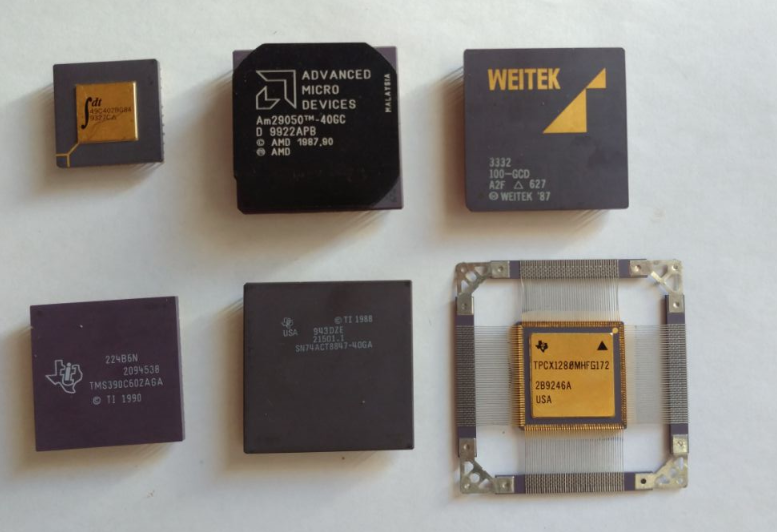
IDT 49C402 (16-bit CMOS BSP), AMD Am29050 (32-bit RISC processor of Harvard architecture), Weitek 3332-100-GCD (32-bit IEEE real coprocessor), second row Texas Instruments TMS390C602A (32-bit real SPARC coprocessor for hardware division and square root extraction, such chips were used back in 1991-1993), Texas Instruments SIM74ACT8847 (64-bit (!) real / integer coprocessor, 1988, to assemble a computer on it, 5 more microcircuits were needed), Texas Instruments TPCX1280 (prototype of an aerospace radiation FPGA with 8000 valves, mid-1980s). Photo from the collection of the author.
There is no official definition of a microprocessor.
Various sources describe it ranging from a single chip to a multi-chip ALU. Basically, microprocessor is a marketing term driven by the need for Intel and Texas Instruments to label their new products.
If it were necessary to pick one father of the microprocessor concept, Lee Boysel would be. While working at Fairchild, he came up with the idea of a computer based on a MOS circuit, as well as existing components - ROM (invented in 1966) and DRAM (originated in 1968). As a result, he first published several influential articles on MOS chips, as well as a 1967 manifesto explaining how MOS could be used to build a computer comparable to the IBM 360.
Boisell left Fairchild and in October 1968 founded Four-Phase Systems to build his MOS system, in 1970 he demonstrated System / IV, a powerful 24-bit computer. The processor used 9 microcircuits: three 8-bit ALU AL1, three ROMs for microcode and three microcircuits of a control device built on irregular logic (random logic (RL) - a method of implementing combinatorial circuits by synthesis according to a high-level description, and, since the synthesis occurs automatically , then the arrangement of elements and their compounds, at first glance, seems arbitrary, almost all modern control devices are synthesized by the RL method). The chipset sold very well, and Four-Phase made it to the Fortune 1000 before Motorola was taken over in 1981. However, AL1 could not operate in single-chip mode and needed an external control unit and ROM with microcode.
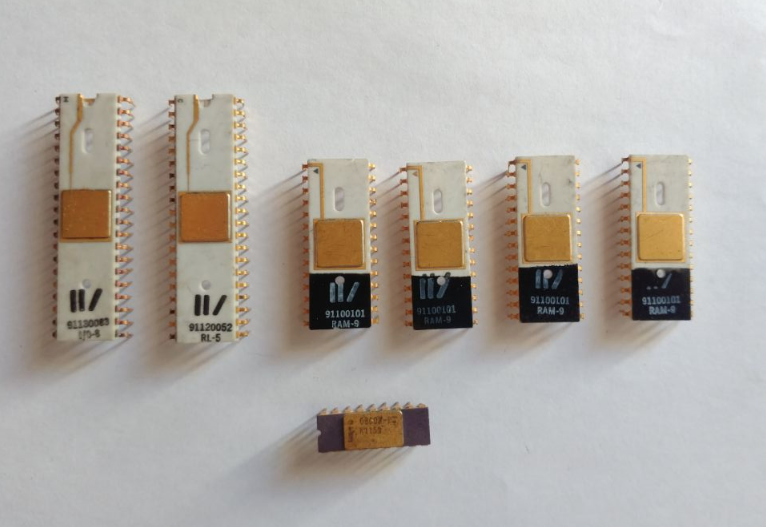
Another almost forgotten company was Viatron, founded in 1967, and already in 1968 they introduced their System 21, 16-bit on custom MOS chips. Unfortunately, the contractors let them down with the quality of the chips, and in 1971 Viatron went bankrupt.
Viatron literally coined the term "microprocessor" - they used it in their announcement back in 1968, but it wasn't a single chip, that's what they called the entire terminal. Inside the microprocessor case were a bunch of boards - the processor itself consisted of 18 custom MOS chips on 3 boards.
Ray Holt, already known to us, designed the familiar F-14 CADC in 1968-1970 for the US Air Force. Thanks to later public relations, many consider him the father of microprocessor technology, but the CADC consisted of 4 separate chips of a very original architecture.
Finally, the last 3 candidates are true SoCs.
In 1969, Datapoint entered into a contract with Intel to develop a single-chip version of their processor for the Datapoint 2200 terminal, which took up an entire board. It's funny that the founder of the company Gus Roche, their engineer Jack Frassanito and Intel specialist Stanley Mazor proposed this idea to Robert Noyce, the founder of Intel, but he first abandoned it, because he did not see broad commercial prospects.
At almost the same time, a small Japanese company, Nippon Calculating Machine Ltd, turned to Intel to develop 12 new calculator microcircuits. Another Intel engineer Edward Hoff (Marcian Edward Ted Hoff Jr.), similar to Stan, comes to the idea of replacing them with one crystal. As a result, the two of them begin to lead both projects: a larger chip - Intel 8008, and a smaller one - Intel 4004.
Hearing about the project, the ubiquitous Texas Instruments turns to Datapoint and tempts them by offering to participate in the development. Datapoint provides them with the specifications, and they manufacture the third version of the real microprocessor - the TI TMX 1795. True, there was not much independence here, to the extent that the chip repeated an early Intel error with interrupt handling.
At this point, Datapoint invents a switching power supply, which leads to a dramatic decrease in power consumption and heating of their terminal, and revokes their contract. Intel freezes development for several months, while TI continues, as a result, their announcement took place a little earlier than the commercial release of Intel 4004, which formally makes it the first microprocessor in history.
The impudent TI continued to sue (as in the situation with the first integrated circuit) with everyone with whom it was possible, right up to 1995, when the cunning Lee Boysel convinced the court that he had invented the first processor and that Texas Instruments' patents had been canceled. The further history is known to everyone - chips from TI were practically not sold, while Intel completed both processors: both large and small, and thus laid the foundations of its fame and fortune for decades to come.
It is amazing that, as in the case of Osokin, the USSR also developed its own, completely independent version of the microprocessor, which very few people know about! In the original version, however, it was a three-chip BSP, but the work was completed in 1976, it was not too late, and no one bothered to upgrade it to a full-fledged single-chip architecture.
As a result, as always, in the field of purely engineering priorities, as in the case of transistors and microcircuits, we went almost on a par with the West and demonstrated a high scientific level of development, but their implementation was ultimately a nightmare.
The first domestic microprocessor did not take off because of who was its godfather - none other than Davlet Gireevich Yuditsky! It seems that Shokin and Kalmykov hated everyone who was engaged in at least something original: Kartsev, Staros, Yuditsky - and purposefully pressed all their developments.
How did Yuditsky, the father of modular supercomputers, come to develop a processor?
We will talk about this in the following parts, we will only note here that at the beginning of 1973, he, at that time director of the Zelenograd Specialized Exhibition Center, assembled a compact working group to develop the architecture of a new mini-computer (not based on DEC and HP machines, like a SM computer ) - "Electronics-NTs", modular and quite original. In the same year, Yuditsky instructed the youth team of V.L.Dshkhunyan's laboratory to work on the development of approaches to the construction of microprocessors - the first in the USSR.
After analyzing what was produced in the West, they chose BSP as a basis and in 1976 they created a 587 series processor on three chips - IK1, IK2, IK3, one of the few that do not have a direct Western counterpart (now their very first release is also the ultimate dream of many collectors). Later, this series developed into 588 (5 chips), and in the early 1980s, specialists from the SVC wanted to finally implement it in a single-chip design, but at the request of the Shoki Ministry of Electronics Industry, the original architecture was abandoned in favor of the PDP-11.
The rest of the developers did not stand aside, VNIIEM purchased Intel 8080 chips, all peripherals, an Intel Intellec-800 development kit for this architecture and enthusiastically engaged in reverse engineering. The 1974 processor was disassembled until 1978 and in the late 1970s was launched as the 580IK80.
From that moment, the era of copying microprocessors began. Contrary to popular belief, the Soviets stole not only three Intel chips (8080, 8085, 8086), the famous DEC LSI-11, embodied in our dozen of forms, and the Zilog Z80. In the USSR, many analogs of all types of processors were produced.
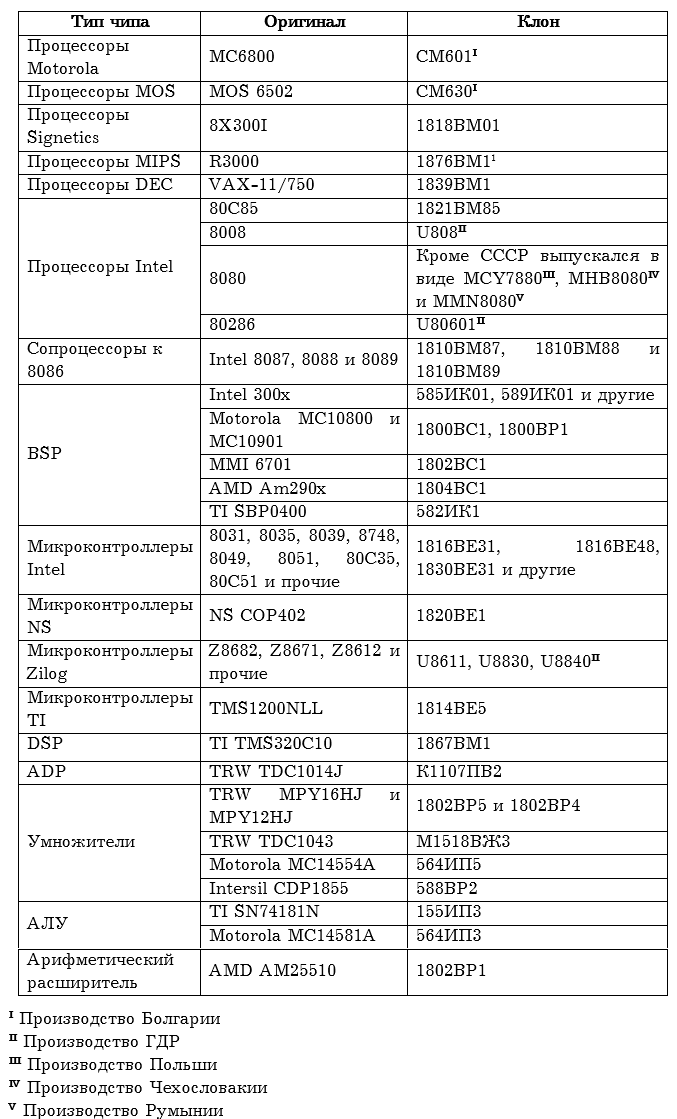
The only processor from this list not stolen, but reproduced under license - 1876ВМ1, Angstrem plant, 1990. Produced (and described for some reason as its own development, although the MIPS consortium provided all the specifications and documents for this architecture), is still as a "32-bit RISC 14 MHz processor", despite the fact that its prototype - the original R3000 worked on 40 MHz back in 1988. In 1999 at NIISI it was overclocked to 33 MHz and released as 1890VM1T "Komdiv" - "the latest domestic development". A slightly more progressive 120 MHz radiation resistant 1892ВМ5Я was assembled on the basis of a slightly less ancient MIPS R4000 + DSP on FPGA (!) Manufactured by Elvis.
Hack and predictor Aviator
Let's sum up.
This table does not cover even 1/10 of all clones, also some of these chips were produced in extremely limited editions (for example, the price of 1810ВМ87 in good condition easily reaches from collectors up to $ 200-300, they are so rare), many were produced only in the CMEA countries (Bulgaria and others) - in the USSR itself, the level of production was too low.
In the Intel lineup, the 8088, 80186 and 80188 processors were skipped, the last two - due to their low prevalence in general, 80286 with the Soviet culture of production was not mastered at all, it was copied and released in extremely small circulation only in the GDR (at least, the author did not succeed find a mythical copy of the purely Soviet KR1847VM286 in any more or less serious processor collection in the world).
The 8086 processor was released about the year the 80386 appeared in the US and was the last of the Soviet clones.
Now we are armed with all the necessary knowledge in order to meet again our hero - Davlet Yuditsky, who was just heading to Zelenograd to develop microcircuits for his upcoming missile defense supercomputer. The story will be about him in the next issue.
- Alexey Eremenko
- https://www.drive2.ru, https://1500py470.livejournal.com/
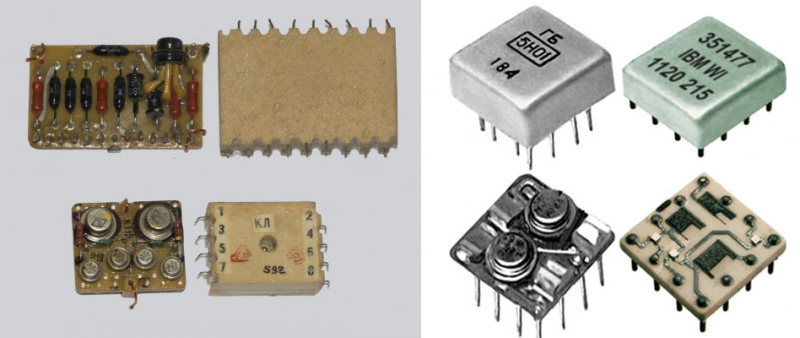

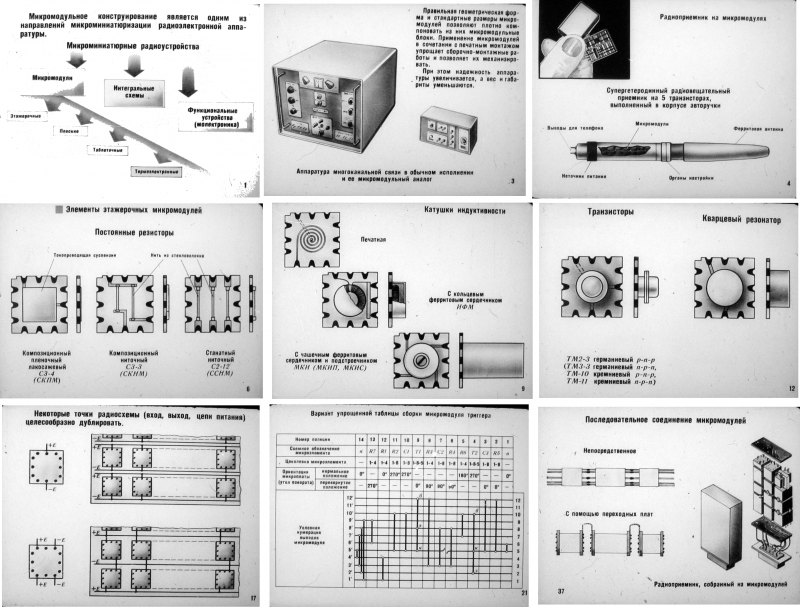
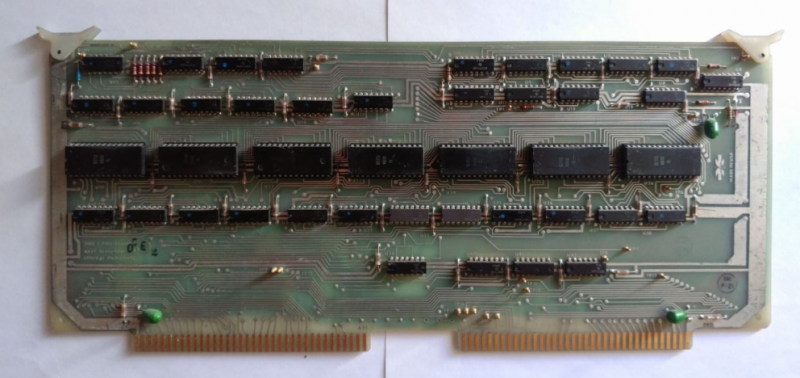
Information